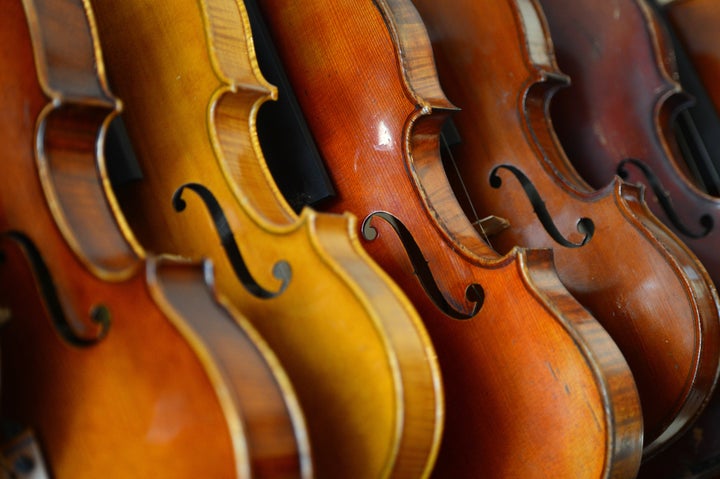
There has been a lot of debate in recent years over what makes a violin special, and, indeed, whether the violins that have traditionally been considered the greatest -- those by Antonio Stradivari and Giuseppe Guarneri del Gesù, in particular -- are really special at all. Are the great old Italian violins really better than instruments by modern makers? If so, why? And by how much?
The "blind test" has become somewhat of a fad in recent years. Gather some expensive old violins, some new violins, a few violinists, and see if anyone can tell the difference. Some tests are conducted more fairly than others. We live in an age of skepticism, and more often than not the point of these exercises is simply to see the old instruments fail. Too often, little or no attention is given to the older instruments' setups, the age of their strings, the compatibility with the bow being used, or the comfort level of the players with old Italian instruments in general, while the new instruments have been chosen specifically for the setting and have been adjusted carefully and optimally, with strings at the perfect point of break-in. Judgments that the modern instruments "sound better" under these circumstances should not be surprising. But the magic of a great violin, old or new, does not reveal itself under these conditions.
There is no doubt that there are fabulous violins being made today, and that some of these modern instruments might indeed be "better" for some artists than some of the great violins of the past. But it is important to examine what defines a violin's greatness, and what a top player will, ultimately, be looking for in an instrument.
When people pay money to attend a violin concert, it is not to hear the sound of a violin. It is to hear music that moves them. For a violinist, finding the "right" instrument, the instrument that will be their musical voice, is sometimes a life-long process. This is not something that can be determined in five minutes in a hotel room. This is not even about "sound," per se. This is an issue of creativity and inspiration.
The violinist who has little curiosity as to the tonal varieties to be found in their instrument is a limited musician indeed; yet finding the tonal possibilities in a great violin is a time-consuming and often frustrating process. And there are few things as sad and frustrating as falling out of love with an instrument that has been one's constant companion. One can be smitten for months or even years with the ease of a particular violin's response, with the power and the beauty of its tone, then one sad day find that there are no mysteries left to uncover -- one has, so to speak, reached the "end" of that instrument.
For the last two centuries, an overwhelming majority of the great violinists have determined that the instruments of Antonio Stradivari and Giuseppe Guarneri del Gesù give them the ability to express the beauty and passion of music with results that are closest to their ideals. These instruments were not chosen simply because they were louder, or had more beautiful tones than others. They were chosen for their ability to bring out the best in their players, to bring their players ever closer to the ideal of communicating musical emotion fully and without barrier, in all of its glory, profundity, and beauty.
Some prominent violinists have begun to use modern violins (or violins by "lesser" makers of the past) as their primary concert instruments. This should not be surprising; choosing a violin is a very subjective thing, and different players look for different qualities in an instrument. Also, the prohibitive cost of Stradivari and Guarneri violins is a very real deterrent to many players -- not only because of the difficulty in securing the use of one (much less purchasing one), but also due to the crippling sense of responsibility for caring for such an expensive item and traveling with it around the globe. And there is no question that the law of diminishing returns applies to violins. A five million dollar violin is not 10 times greater than a half million dollar violin, and certainly not a hundred times greater than a top modern instrument priced at $50,000.
But I have heard people speak of the greatness of the old Italian violins as a myth, the implication (stated and unstated) that violinists are being taken in by the name, history and price tag. I would ask these people if they really think that Itzhak Perlman is not a better judge of a violin's capabilities than they are. Or Pinchas Zukerman. Or Anne-Sophie Mutter. Or Maxim Vengerov. I could go on and on.
Speaking for myself, playing regularly on Stradivari violins for the past 19 years has been as great and consistent a learning experience as I could ever have hoped to have. Every day my Strad pushes me to be ever more refined, ever more creative, and, most importantly, ever more directly communicative with my playing. And this is really the measure of greatness for a violin.